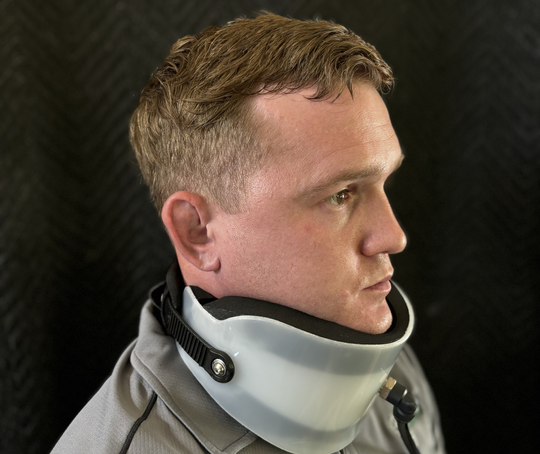Baro Chamber
Features:
-
Dimensions:
-
28.5” L x 28“ W x 44.5" H; ~75 lbs
-
-
Instrument details:
-
High speed motors/valves for rapid pressure changes
-
Achievable pressure range: +40 to -80 mmHg
-
Analog output for pressure
-
Hooks on two sides of instrument frame for storing neck chambers
-
Equipped with lockable casters for easy movement and storage
-
Designed with a worktop and alcove for additional storage
-
-
Lightweight neck chamber:
-
Easily secured on the subject with ratcheting strap
-
Forms a tight seal with neck
-
Accommodates large range of subject size variability
-
-
Automated pressure control:
-
Rapid rate of pressure change
-
Precisely controlled intensity, timing, and duration of stimuli
-
High level of repeatability
-
-
Comprehensive software:
-
Ability to perform precise step protocols with rapid pressure changes
-
Intergraded ECG trigger
-
Data can be exported as CSV file
-
Viewed in real-time via a web interface
-
Carotid baroreflex stimulation, through the manipulation of carotid transmural pressure, is commonly used to explore baroreflex, cardiovascular, and autonomic-focused research questions. The carotid baroreflex plays a critical role in the homeostatic regulation of blood pressure through modulation of heart rate and peripheral vascular resistance. Thus, the application of positive and/or negative pressure to neck chambers, that encompass the carotid baroreceptors, has various applications in both physiological and clinical settings. This includes research investigations to assess orthostatic tolerance, cardiovascular risk, and autonomic function along with clinical applications involving the assessment of medications and other treatment options for individuals with spinal cord injury, hypertension, heart failure, pain etc. There are numerous advantages to this technique including it is non-invasive, allows for the assessment of reflex vascular as well as cardiac responses, and allows for study of the entire sigmoid stimulus-response curve. Nevertheless, to date there have been several instrumental limitations that have presented a barrier to more extensive use of this valuable research tool, some of which include subject apprehension with a cumbersome neck chamber, sealing issues with the chamber, and inability to use under experimental conditions involving exercise, head-up tilt etc. The Technavance Solution overcomes these limitations! The instrument comes with lightweight paired neck chambers, which are easily secured on and removed from the subject, that allow for unilateral stimulation, access to the aorta for simultaneous blood flow assessment, and the ability to use during exercise or head-up tilt. In addition, the instrument comes with automated pressure control so rate of pressure change along with intensity, timing, and duration of stimuli can be accurately controlled with high levels of repeatability and comprehensive software capability that supports the ability to do step and oscillatory protocols and can be viewed in real-time via a web interface. The systems engineering allows for a range of pressure achievable in the neck chambers from ~+30 to -80 mmHg, that can be viewed in real time and/or exported directly into a third-party data acquisition system. The instrument is also equipped with castors for easy movement, hooks on two sides for hanging neck chambers along with an additional storage area and work surface.










